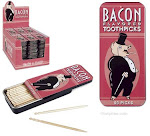Needy Film #2 After Hours
It's time again to speak of needy films. And this needy film is Martin Scorsese's After Hours.
Heard of it?
When you step back and look at Scorsese's filmography, it's easy to gloss over this film and forget that Scorsese won the Best Director at Cannes for it. And with all this talk about the grittiness of The Departed, it's important to remember that Scorsese has some pretty good comedy chops too.
The plot is simple. Imagine a nightmare. Any nightmare that involves you being trapped and trying to get out and bad things are happening all around you. That's After Hours.
More specifically, it's about Paul (Griffin Dunne) a bored computer programmer and how he meets Marcy (Roseanna Arquette) one night at a coffee shop. She invites him over later that night to SOHO and it is in SOHO that Paul gets entangled in a complicated web of unfortunate events over the next 12 hours or so.
This movie is so fast and furious that it literally screams for repeat viewings. The first time I saw this movie, I hated it because it got under my skin so much. The second time, I had a blast. Scorsese takes after this material with such zest, how can you not?
What I love so much about this film is Scorsese's knack for comedy. Who knew that the same guy that could make you squirm with a brutal beating could also make you double over in laughter. Scorsese leaves the intensity of Mean Streets and Taxi Driver behind and creates comedy so subtle, you have to view this movie again (or at least pause a lot) to pick up every nuance. There is no better example of this than when Paul meets Julie (Terri Garr) a miserable waitress who thinks that it's still the 1950s. Julie invites Paul up to her room and it's there that if you blink you'll miss the wall of Aqua Net cans and the mouse traps that surround her bed.
The other thing you can't help but noticing about After Hours is the cinematography by Michael Ballhaus. The camera wanders through scenes picking up every small detail as if through the eyes of Paul. When the scene is boring, the camera is locked down. When the scene is fast and furious, the camera fluidly zooms through the action. At the beginning of the film as Paul educates a new employee, his eyes drift as the employee drones on to Paul. Scorsese could have communicated Paul's boredom and despair with a blank stare, but instead the camera picks up every mundane detail that Paul sees. Papers shuffling, carts wheeling by, etc. Ballhaus makes you feel Paul's desperation. Later when Paul enters a punk-rock club, the camera is everywhere moving furiously from one thing to the next.
At the end of the movie, as Paul gets dumped off in front of the building in which he works, you know that Paul's night of misadventure is over and a new day of monotony is about to begin again. And even though you know Paul has been put through the ringer, you can't help but think he's a little bit better for the hell he has just been put through. And so are we.
Movie trivia: The script is written by Joseph Minion. It was his thesis while at Columbia Film School. Think he got an 'A'?












![Validate my Atom 1.0 feed [Valid Atom 1.0]](valid-atom.png)
No comments:
Post a Comment